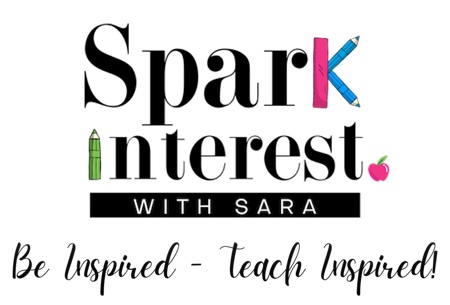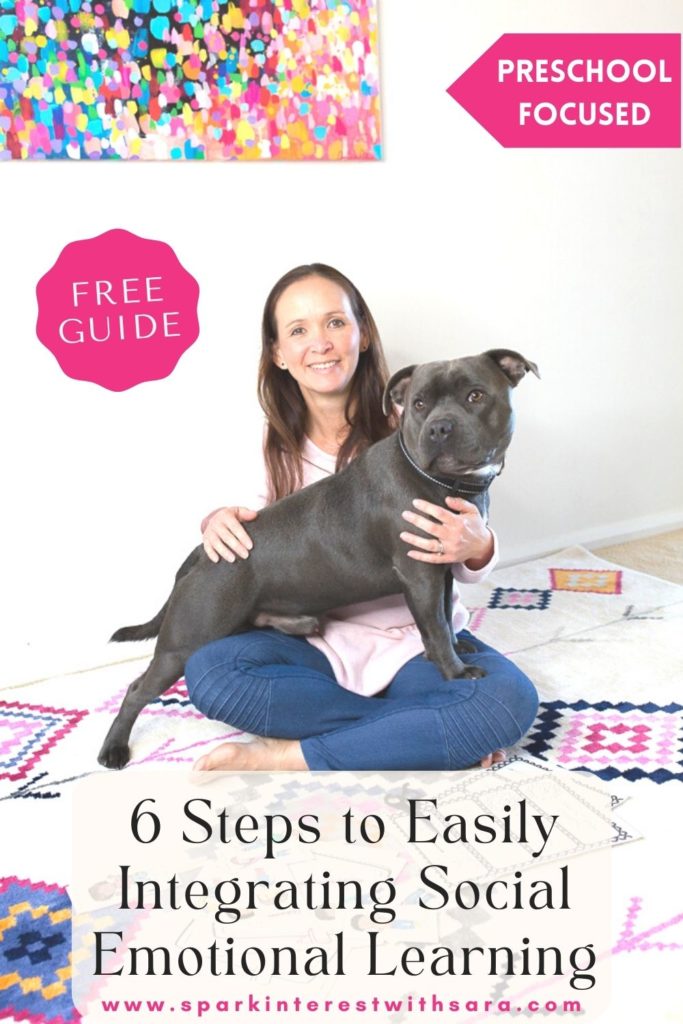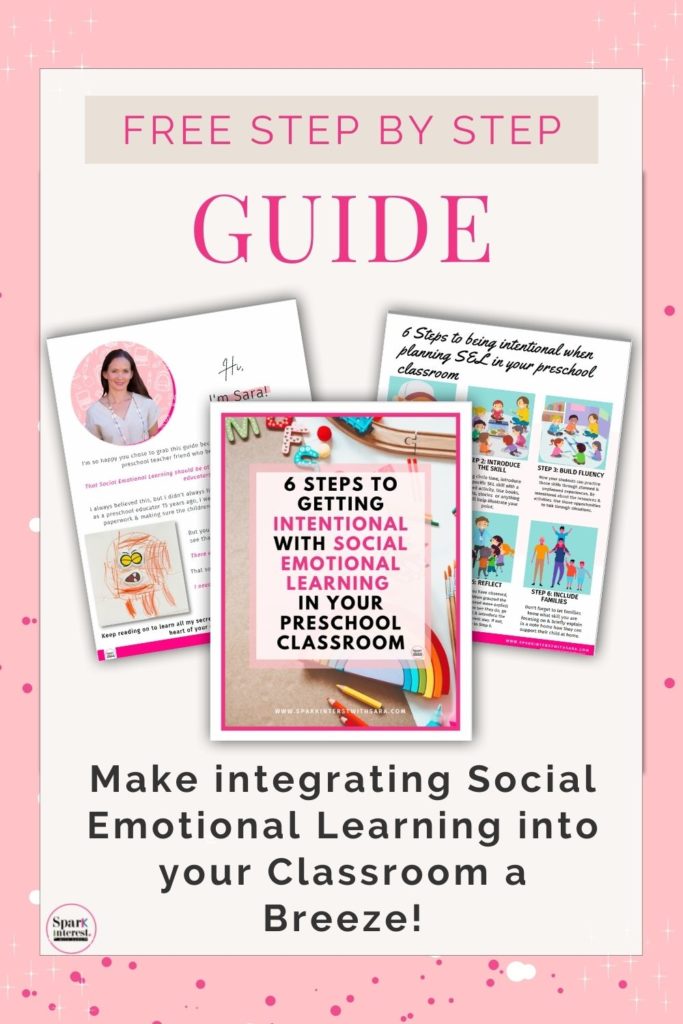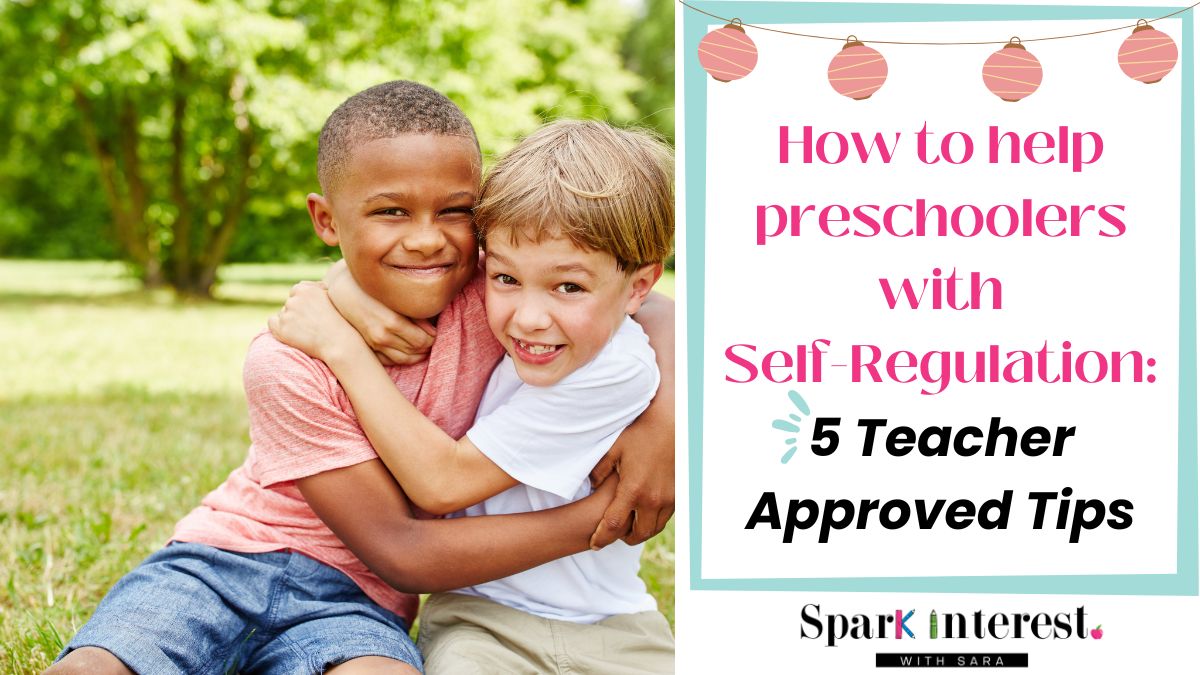
Self-regulation is the ability to understand and manage our own behavior, which includes being able to manage our behavior in reaction to things happening around us and the feelings we may have about them. For our young learners, that means being able to:
- regulate strong emotions like anger, frustration and excitement.
- know how to calm down when needed.
- focus on a task or be able to refocus on a new task when needed.
- manage and control impulses
Why do we need to help our preschoolers with self-regulation?
Children who feel things strongly and deeply often find it more difficult to self-regulate. Our preschoolers are just at the beginning stages of figuring out friendships and learning the social skills associated with playing with others. We need to help build the skills needed for self regulation because it helps them make friends, listen better in class, understand their own emotions, behave in socially acceptable ways and to help them gain more independence. Learning these skills sets them up for greater success in the future.
Before I jump into the specifics of self-regulation skills, I wanted to share with you my Free Guide to Sprinkling Social Emotional Learning into Your Everyday. The easy to follow steps will help you make social emotional learning at the heart of your preschool room. Click on the image below to grab it today!
What Are Self-Regulation Skills?
A preschooler needs to start working towards these four main self-regulation skills: goal-setting, self-monitoring, self-talk, and self-reinforcement. Although it is hard to imagine our young learners gaining all these skills in the time they are with you, it is important to begin the journey of developing self-regulating skills in your classroom! Here is the breakdown of each skill.
Goal Setting
Goal setting helps students understand what they are working towards. Goal setting can improve a student’s attention, motivation, and effort. When setting goals, students should pick appropriate goals (not too hard/easy), make plans for meeting goals, self-monitor progress towards meeting the goal, and change it as needed.
Preschool Example: If a child decides they want to build a castle in the block area, they decide on their goal (what they are going to build), how they are going to do it (what materials they will use), monitor how they are going (is what I am doing working?) and finally adjust goal if things are not working (maybe use something different to build it).
Self-Monitoring
Self-monitoring is when a student keeps track of their progress and records the results. Self-monitoring engages students, increases their awareness of their behaviors/actions, and provides immediate feedback to the student.
Preschool Example: For our preschoolers, this means beginning to be more aware of what they are doing, saying and feeling. How does what I am doing affect my progress or affect my relationships with my peers? What am I feeling at this moment? Why am I feeling this way? What is happening to make me feel this way? How is my action affecting others?
Self-Talk
Self-talk is when students talk themselves through an activity or a situation. Students can create guiding statements to help them. Some examples where students may use self-talk are coping with a difficult situation, working through a task or problem, or rewarding themselves.
Preschool Example: Teach your students different ways they may use self-talk to help them regulate their behaviors and emotions. Instead of yelling and crying, you may teach your students to say: “I am so mad because Becky came over and knocked down my blocks! I want to scream, but I will walk away and take a break.”
Self-Reinforcement
Self-reinforcement is when a student rewards themselves after completing a task. After completing a task, a student could reward themselves with a reinforcer. These may include something tangible(lollipop, sticker), social(a special lunch with a teacher), or activity (watch tv). It may also include some positive self-talk.
Preschool Example: When a child completes a challenging task, they are able to be proud of themselves and maybe even say to themselves, “I did a good job.”
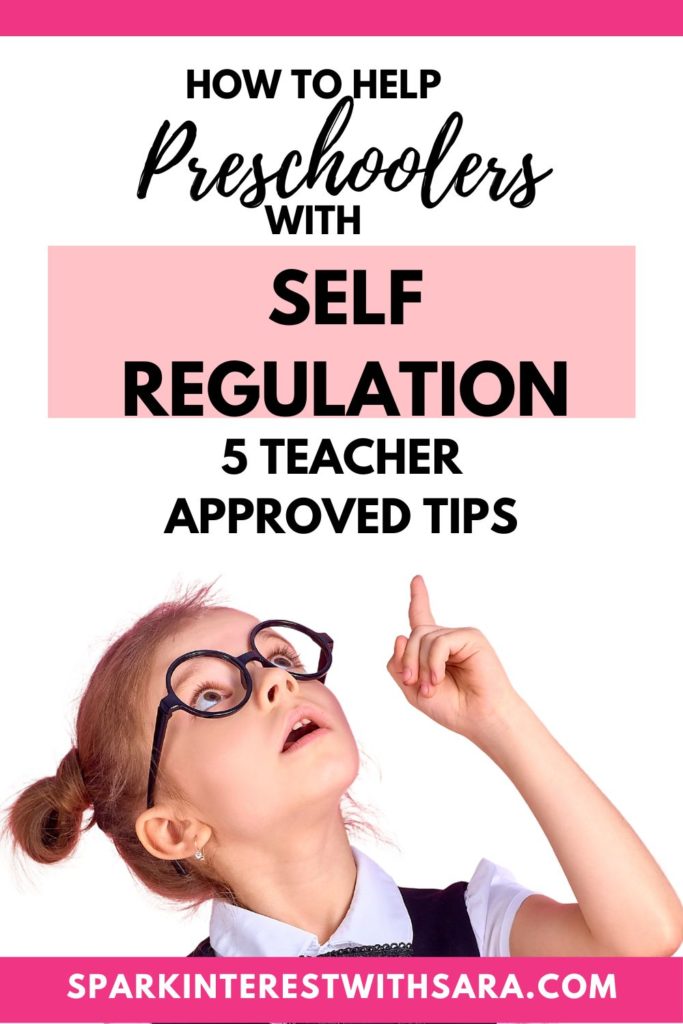
How Do You Know Your Preschooler Is Struggling With Self-Regulation?
There are a lot of signs that can help you figure out if your preschooler is struggling with self-regulation.
Some signs are :
- Meltdowns, tantrums
- Difficulty in transitions
- Problems with social relationships – yelling, touching others, being too close
- Difficulty in waiting or taking turns
- Problems during circle time – touching others, moving around, yelling out.
All preschoolers struggle with the above multiple times a week, and sometimes they struggle numerous times a day. But, if your preschooler is truly struggling with self-regulation, the above signs will happen very often, every single day, and often will be constant.
How To Help Children With Self-Regulation Skills?
There are definitely some ways you can help your child develop more effective self-regulation skills. Here are 5 helpful ways!
- Play Games
Every kid loves to play a game, so turn practicing the different self-regulation skills into one! You want to find games that, first and foremost, practice patience, meaning you want to make your child wait for their turn. Some games include board games, card games, and relay races.
You may also want to play games that require your child to listen for directions or be a good listener. Like telephone, Simon says, red light, green light, and duck-duck-goose.
Finally, games like Jenga and freeze dance can help children self-monitor their actions.
- Teach Children To Identify Their Own Emotions
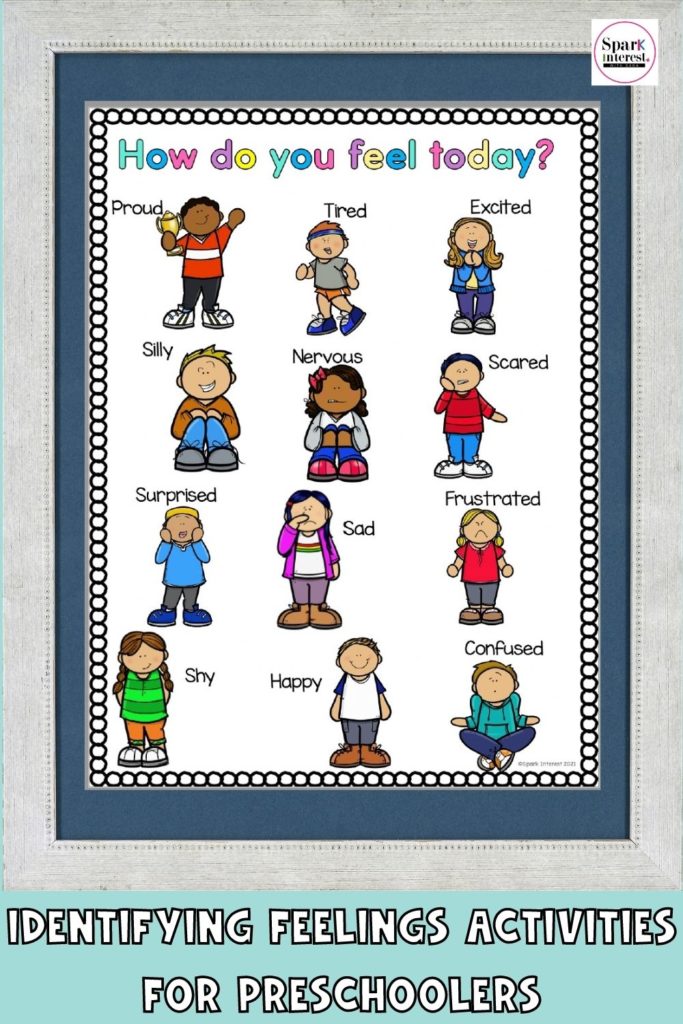
The first two questions you want students to be able to answer by the end of preschool are what am I feeling? And what does it feel like? It is a challenge for preschoolers to be able to identify their emotions and be able to manage them. They often do not understand why they are angry or sad, and they sometimes cannot figure out what their feelings are. You probably have had a little 4-year-old run up to you crying, and when you say, “oh no, what’s wrong?!” and through sobs, they say, “I don’t know!!”
It’s a typical conversation in the preschool classroom, and helping students be able to identify and manage their emotions is important! Read stories and engage your students with different identifying feelings activities, they are a perfect way to get your students started. Once you have taught your students all about their emotions and how to identify them, work through real situations or common scenarios, and discuss or role play how they can manage their emotions effectively.
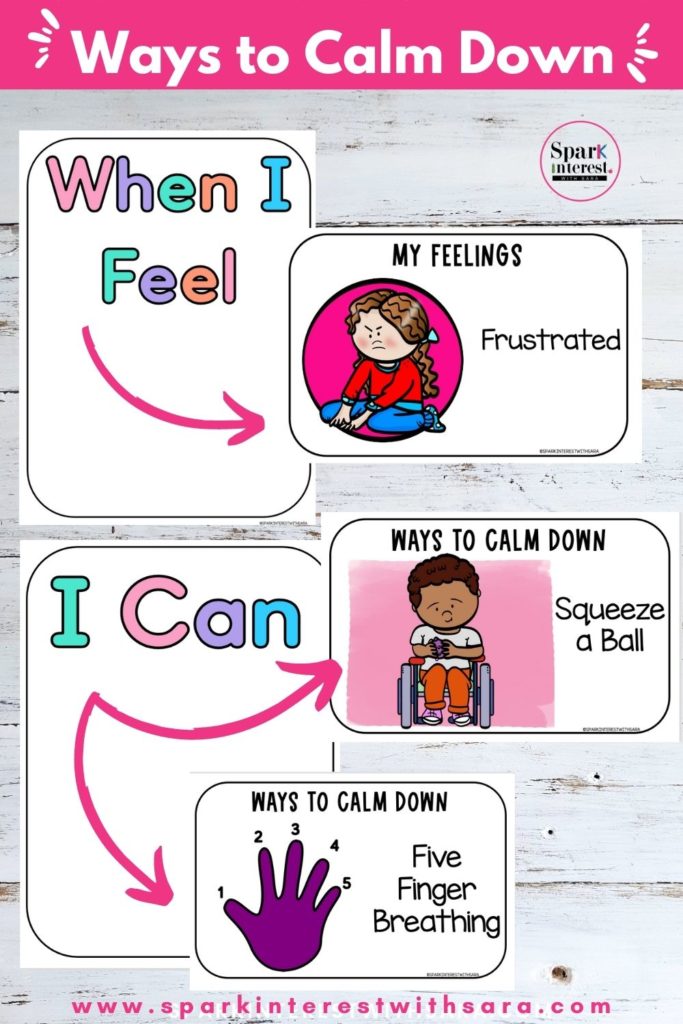
- Teach And Practice Calming Techniques
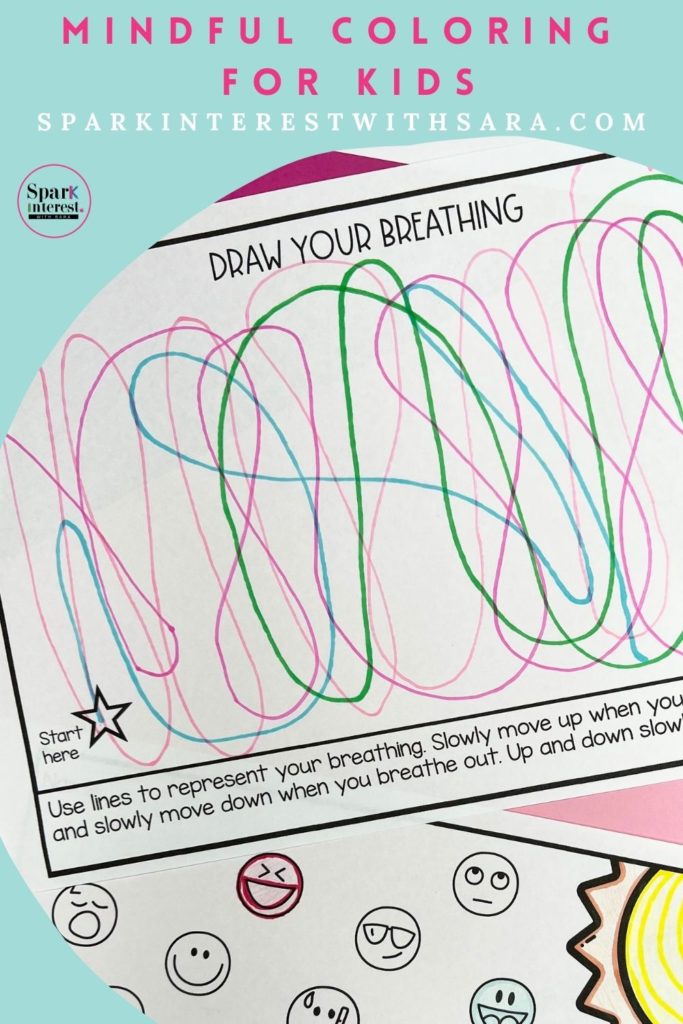
Teaching and practicing calming techniques should happen often! When preschoolers can calm themselves down, it allows them to become more in tune with their emotions and their ability to identify what has made them upset and figure out ways to solve the issue. Teaching mindfulness techniques is a great way to help students learn how to calm down and be more mindful of their emotions. There are also a lot of awesome resources to help practice and learn all about mindfulness, like a mindfulness Scavenger hunt, mindfulness worksheets, and mindful exercises for kids.
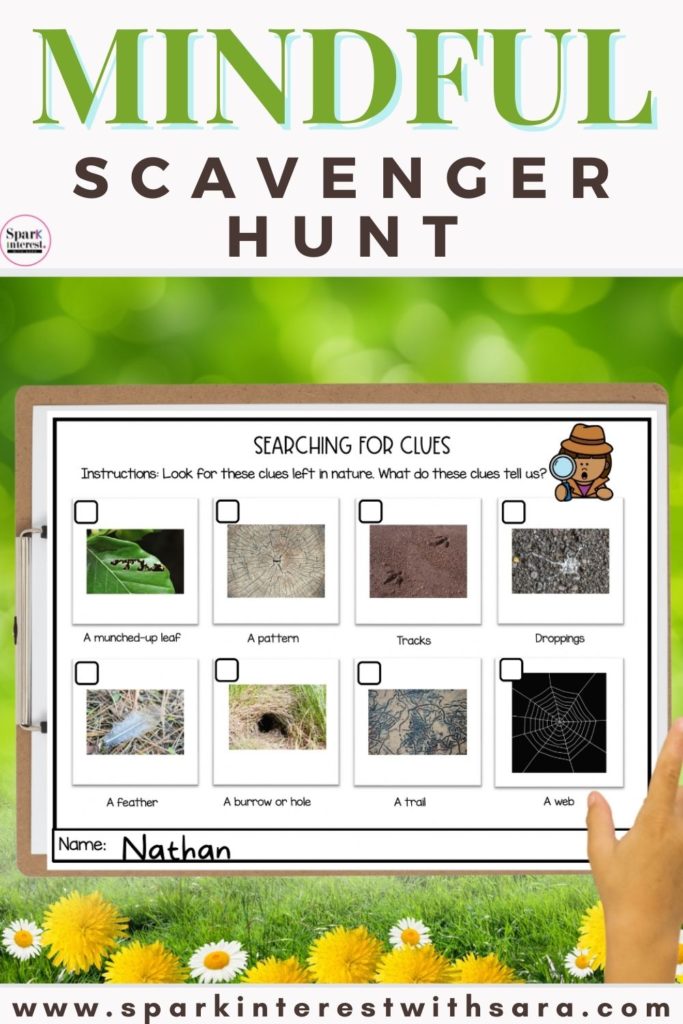
4. Create A Calm Down Area In Your Classroom
A calm-down area is a perfect place for students who may need a minute or two to identify their emotions and help themselves calm down. In this corner, you can have visuals of relaxation skills, calm-down items like a sand timer, stress balls, and comfortable places to sit like a bean bag or a fuzzy blanket/pillow. You can also put things like calm down strategy cards. Putting together a calm-down corner is super easy to do and your young learners will appreciate having a quiet area to go to when they need it.
5. Create a Plan And Help Reach a Goal
One last helpful tip. If you are working with your students on self regulation, create a plan and help them reach a goal. Look at each student (who needs a little help) and see if you can come up with something they can work towards. Whether they struggle with eating their snack all week without getting out of their seat or using the calm down corner when they become upset. Work with them to develop a plan and help them reach the goal.
How To help Preschoolers With Self Regulation Overview
Let’s review the information discussed in this article and how you can help your preschoolers with self regulation.
First, self regulation is the ability to control your actions and emotions without the help of someone else (like a parent or teacher). Some signs to look for when a student struggles with self regulation are tantrums, difficulty with transitions, a hard time waiting or taking turns, and problems with school activities like circle time (getting up, touching others, etc.). All preschoolers will struggle with the things mentioned, but a student who is having difficulty with self regulation will show these signs more than their peers.
There are many ways to help students learn and work towards self regulation. Some things you can do are:
- Play games to help with turn-taking, listening to directions, etc.
- Teach about emotions.
- Teach/practice calming techniques.
- Have a calm down area in the classroom.
- Help create a plan and reach a goal.
Self-regulation is a difficult skill; preschoolers are just learning how to navigate the world of emotions, classmates, goal setting, and working in a classroom environment. I hope these tips will help get you started in developing your students self-regulation skills!
There are a lot of amazing articles and websites about developing self-regulation skills. Here are two articles I thought were really interesting reads:
16 Awesome Picture Books to Teach Self-Regulation in Early Childhood
How Can We Help Kids With Self-Regulation?
50 Beautiful Social Emotional Development in Early Childhood Books
Don’t forget to grab my FREE Guide below:
Let's Connect:

Sara
